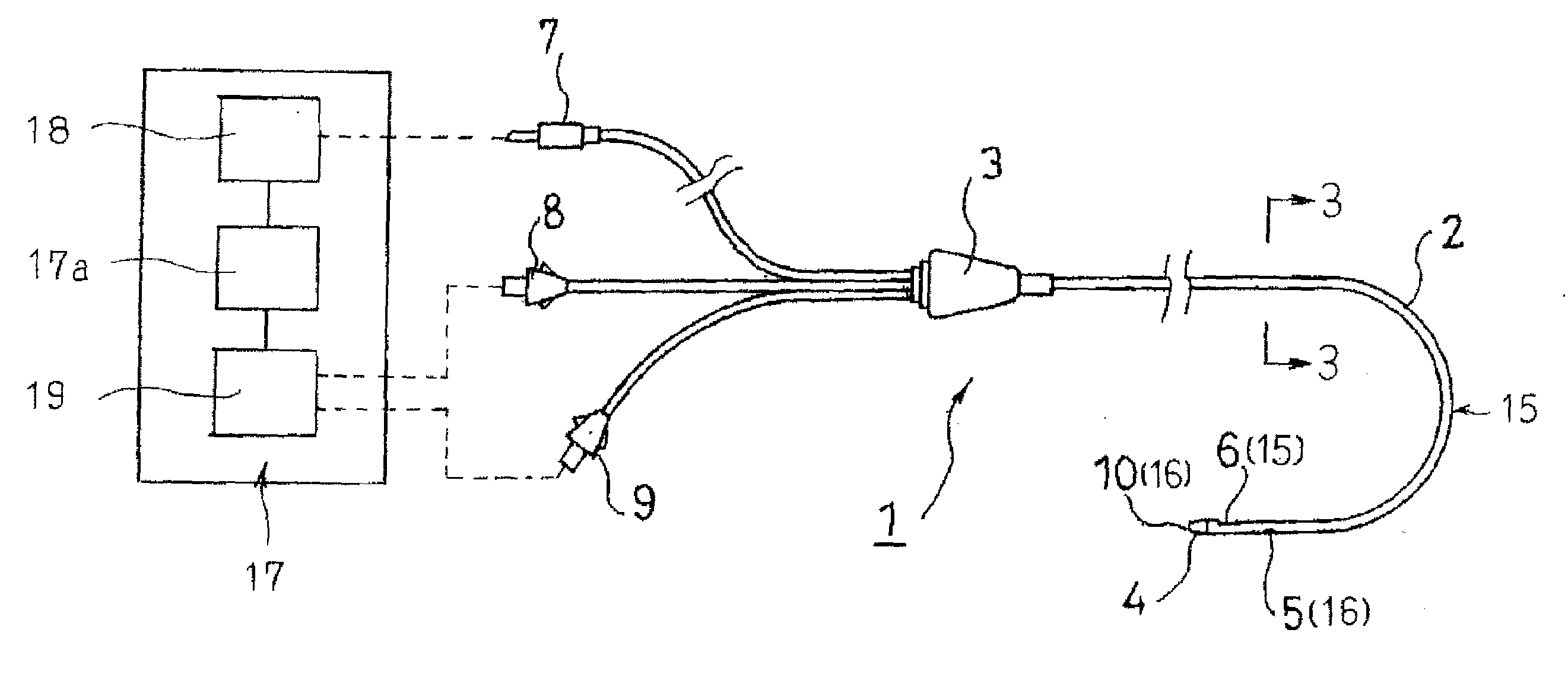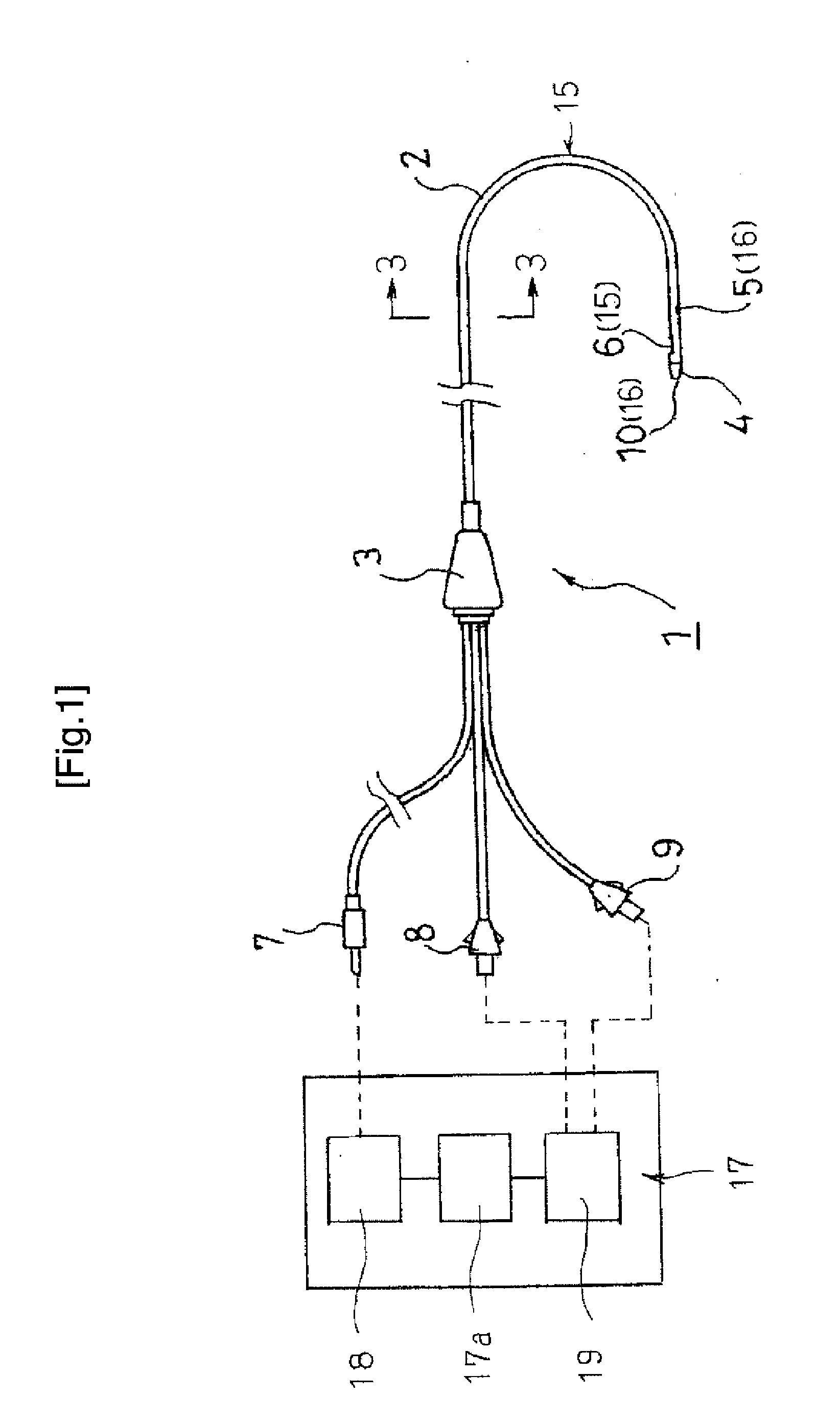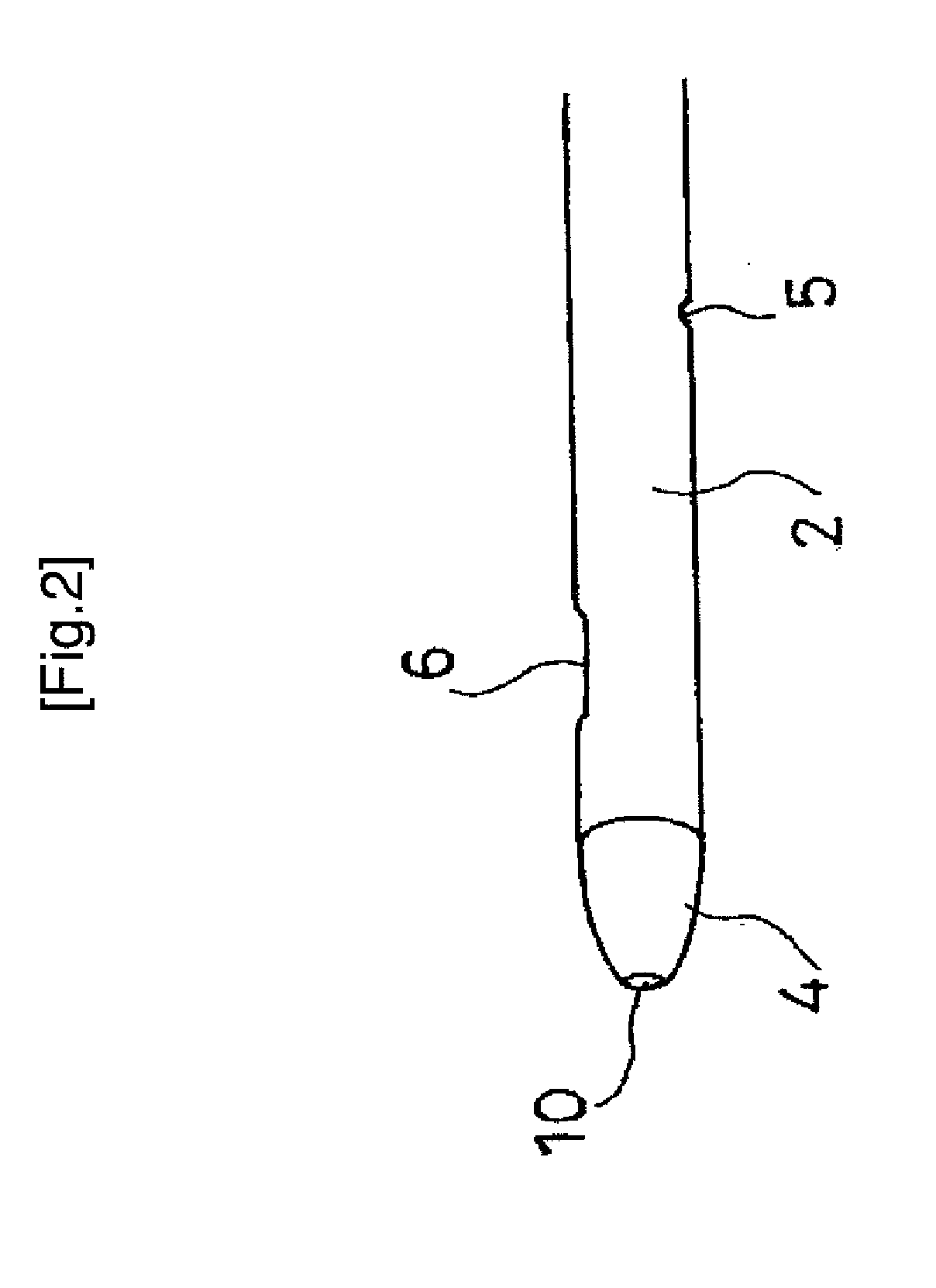Device for diagnosing tissue injury
a tissue injury and diagnostic device technology, applied in the field of tissue injury diagnostic devices, can solve the problems of lipid peroxidation and apotosis, difficult to make quantitative analysis of ros, and the detection current of superoxide anion radicals is reduced promptly, so as to achieve accurate diagnosis
- Summary
- Abstract
- Description
- Claims
- Application Information
AI Technical Summary
Benefits of technology
Problems solved by technology
Method used
Image
Examples
example 1
[0094]In Vitro Validation of Radical Sensor in Rat Blood
[0095]The radical sensor 15 was verified in rat blood before it was applied to an in vivo model.
[0096]That is, the amount of superoxide anion radicals was measured by immersing the sensor electrode 6 formed at the tip end 4 of the catheter 1 of the device of the present invention 1 in rat blood collected from a rat (see FIG. 5).
[0097]1) Subject Rats
[0098]Twenty-eight male specific pathogen free Wister rats, weighing 250-300 g, were used. The rats were anesthetized by 4% isoflurane and 96% oxygen. After laparotomy, whole blood was sampled from the inferior vena cava with 500 U of heparin. Blood samples were used as soon as possible.
[0099]2) Preparation and Measurement of Rat Blood
[0100]Individual bloods were randomly assigned to one of three experimental groups: 30 mU / ml of xanthine (hereinafter referred to as “XAN”)+xanthine oxidase (hereinafter referred to as “XOD”) (n=7, low XOD group) (see (2) in FIG. 5), 60 mU / ml of XAN+XOD...
example 2
[0116]Measurement of Superoxide Concentration in an Acute Phase Ischemic Disease Model (Rats)
[0117]1) Subject Rats
[0118]Sixteen male Wister rats (260-280 g) were randomly assigned to 2 groups, i.e., the reperfusion group (n=8) and the reperfusion with SOD group (n=8). There is no statistical difference of body weight of rats between the 2 groups.
[0119]2) Configuration of the Radical Sensor 15
[0120]The radical sensor 15 installed in the device of the present invention is a catheter-typed one shown in FIG. 1. An electrodeposited film of a polymeric iron porphyrin derivative attached to a carbon electrode is placed in stainless steel tube as an auxiliary counter electrode.
[0121]3) Experimental Method
[0122]A dummy probe and a guide tube of microdialysis were embedded in the brain parenchyma of the rat on the previous day of the experiment under pentobarbital anesthesia (intraperitoneal administration, 50 mg / kg). The guide tube was fixed by dental resin at 3 mm outside and 3 mm anterior ...
example 3
[0137]Measurement of Superoxide Concentration in Acute Phase Sepsis Model (in Rats)
[0138]1) Subject Rats
[0139]Twenty-one male specific pathogen free Wister rats, weighing 250-300 g, were used in this example. The rats were randomly assigned to one of the 3 groups, i.e.; sham group: intravenous bolus and continuous administration of saline (n=7); LPS group: bolus lipopolysaccharide (hereinafter referred to as “LPS”) and continuous administration of saline (n=7); and bolus LPS and continuous administration of superoxide dismutase (SOD) (n=7).
[0140]2) Configuration of the Radical Sensor 15
[0141]The radical sensor 15 installed in the device of the present invention 1 is a catheter-typed one shown in FIG. 1. An electrodeposited film of polymeric iron porphyrin derivative attached to a carbon electrode is placed in stainless steel tube as an auxiliary counter electrode.
[0142]3) Experiment Method
[0143]The rats were anesthetized by 3% isoflurane and 97% oxygen. They were mechanically ventil...
PUM
 Login to View More
Login to View More Abstract
Description
Claims
Application Information
 Login to View More
Login to View More - R&D
- Intellectual Property
- Life Sciences
- Materials
- Tech Scout
- Unparalleled Data Quality
- Higher Quality Content
- 60% Fewer Hallucinations
Browse by: Latest US Patents, China's latest patents, Technical Efficacy Thesaurus, Application Domain, Technology Topic, Popular Technical Reports.
© 2025 PatSnap. All rights reserved.Legal|Privacy policy|Modern Slavery Act Transparency Statement|Sitemap|About US| Contact US: help@patsnap.com



